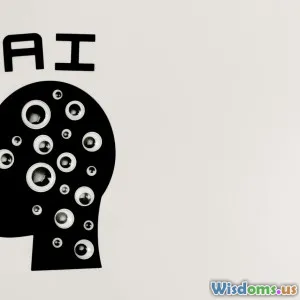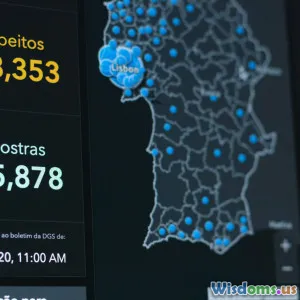
The Future of Crime Solving: AI in Forensics
8 min read Explore how AI is revolutionizing forensic science and transforming crime solving in the digital age. (0 Reviews)
The Future of Crime Solving: AI in Forensics
For centuries, solving crimes has hinged on painstaking detective work and painstaking analysis of physical evidence. However, with the advancement of technology, particularly artificial intelligence (AI), the landscape of forensic science is undergoing a transformative revolution. By merging data, computational power, and machine learning models, AI is enabling faster, more accurate crime solving methods than ever before. This article explores the exciting synergy of AI and forensics, the challenges it faces, and how it is shaping the future of criminology and crime investigation.
Introduction: The Dawn of a New Era in Crime Solving
Imagine extracting clues from a crime scene at lightning speed, analyzing complex evidence in a fraction of the time, and forecasting criminal behavior before it occurs. While this scenario once belonged solely to futuristic fiction, it is rapidly becoming reality thanks to the integration of AI into forensic processes. Law enforcement agencies, forensic labs, and judiciary bodies worldwide are embracing AI tools to enhance accuracy, reduce human error, and uncover patterns beyond human detection.
The future of crime solving relies heavily on technologies like machine learning, pattern recognition, natural language processing, and computer vision to interpret vast datasets, from genetic material to digital footprints. Understanding this AI-driven evolution is critical not only for specialists but also for the public and policymakers to appreciate and navigate the ethical and operational implications.
AI Technologies Transforming Forensics
Accelerating DNA Analysis
Traditional DNA profiling requires lengthy lab procedures and expert review. AI leverages algorithms to streamline sequencing, match DNA profiles, and handle complex genetic mixtures.
-
Example: The UK’s National DNA Database incorporated AI tools that reduced the average turnaround of forensic DNA analysis by over 30%. This efficiency boosts timely suspect identification and exculpation alike.
-
AI algorithms can identify single nucleotide polymorphisms (SNPs) in complex DNA mixtures, enhancing the validity of forensic testimony in courts.
Image and Video Forensics
AI-powered image recognition tools analyze surveillance footage, photos, and crime scene imagery to identify persons of interest or reconstruct events.
-
Real-world Insight: In a 2019 investigation, an AI system successfully identified suspects by analyzing gait patterns extracted from grainy CCTV footage—a task challenging for human analysts.
-
Enhanced facial recognition deployed by law enforcement uses deep learning to sift through vast databases faster and with greater accuracy.
Digital Forensics and Cybercrime Detection
With crimes increasingly involving digital devices, AI scrutinizes vast amounts of data to detect patterns, anomalies, and evidence within encrypted or corrupted files.
-
Techniques like Natural Language Processing (NLP) detect suspicious communications or threats in emails and chat transcripts.
-
Machine learning models predict phishing attacks and cybercrime trends, helping agencies preempt attacks.
Predictive Policing and Crime Pattern Analysis
Beyond analyzing past crime evidence, AI models forecast potential crime hotspots and behaviors by evaluating historical crime data, social trends, and environmental factors.
-
Data Point: Studies show predictive policing has helped reduce specific crime rates by up to 20% in pilot cities.
-
However, this remains controversial, demanding transparent algorithms and safeguards against reinforcing biases.
Challenges and Ethical Considerations
Addressing Bias in AI Models
AI systems are only as unbiased as the data and design behind them. Historical data may contain systemic biases, which, if incorporated without scrutiny, propagate unfair enforcement.
- Example: Facial recognition technology has exhibited lower accuracy rates in identifying individuals with darker skin tones, raising concerns about wrongful suspicion.
Ensuring Transparency and Accountability
Machine decisions in criminal investigations require explainability to maintain trust in justice systems. Black-box AI models pose challenges in court settings where the rationale for evidence analysis must be disclosed.
- Some agencies are adopting explainable AI techniques that allow forensic analysts to understand, verify, and justify AI-generated conclusions.
Privacy and Data Protection
The extraction and use of personal data in AI-driven forensics must align with privacy laws to prevent abuses, unauthorized surveillance, or hacking risks.
The Road Ahead: Integrating Human Expertise and AI
AI does not replace forensic scientists and investigators but augments their capabilities. Human insight is vital for interpreting AI output, contextualizing results, and making judgements within the legal framework.
Looking forward, forensic education and training increasingly incorporate AI literacy to prepare a new generation of professionals capable of leveraging these tools effectively and ethically.
Collaborative frameworks involving technologists, criminologists, ethicists, and policymakers will be essential to balance innovation with rights and transparency.
Conclusion: Unlocking New Frontiers in Justice
Artificial intelligence is reshaping forensic science from the ground up, enabling quicker and more precise crime solving than previously imaginable. From DNA analysis to image processing and digital detection, AI improves the speed and accuracy of investigations, enhancing the delivery of justice worldwide.
Nevertheless, ethical oversight, transparency, and continuous refinement are crucial to prevent pitfalls like bias and privacy violations. As AI-powered tools mature, fostering collaboration between humans and machines will unlock the fullest potential of this technology. The future of crime solving, armed with AI insights, promises not only to uncover hidden truths efficiently but also to uphold fairness and justice standards in an increasingly complex world.
For those passionate about criminology, law enforcement, or policymaking, embracing and shaping AI innovations is not an option but a necessity to protect and serve effectively in the digital era.
References
- National Institute of Justice, "Artificial Intelligence and Forensics Studies," 2022.
- MIT Technology Review, "How AI is solving crimes," 2023.
- The Guardian, "Facial recognition tech criticized for racial bias," 2021.
- Journal of Forensic Sciences, "AI applications in DNA mixture interpretation," 2020.
(Note: All examples and data refer to aggregated publicly available knowledge as of early 2024.)
Rate the Post
User Reviews
Popular Posts





















